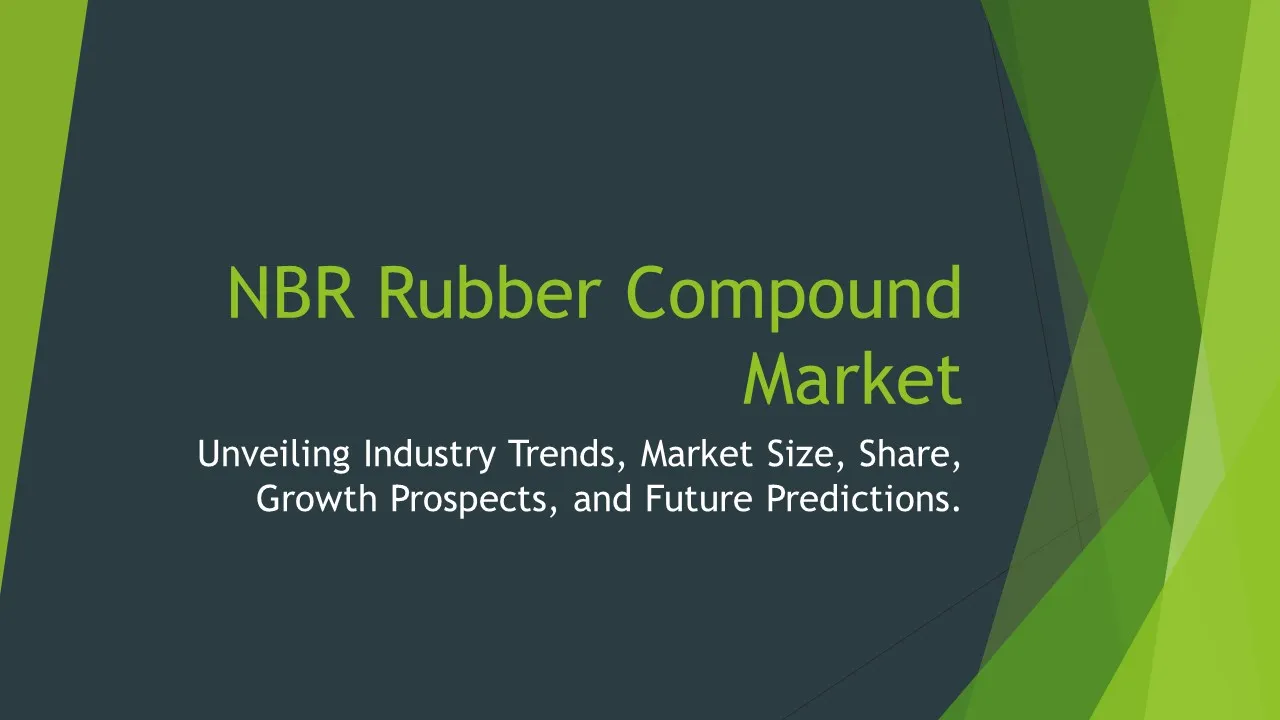Composite Adhesive
Composite Adhesive Market Segments - by Product Type (Epoxy Adhesives, Polyurethane Adhesives, Acrylic Adhesives, Silicone Adhesives, and Cyanoacrylate Adhesives), Application (Automotive, Aerospace, Construction, Marine, and Electronics), Distribution Channel (Direct Sales, Distributor Sales, Online Retail, Hardware Stores, and Specialty Stores), Ingredient Type (Resins, Fillers, Hardeners, Solvents, and Additives), and Region (North America, Europe, Asia Pacific, Latin America, and Middle East & Africa) - Global Industry Analysis, Growth, Share, Size, Trends, and Forecast 2025-2035
- Report Preview
- Table Of Content
- Segments
- Methodology
Composite Adhesive Market Outlook
The global composite adhesive market is projected to reach USD 32.5 billion by 2035, expanding at a compound annual growth rate (CAGR) of 5.2% from 2025 to 2035. This growth trajectory can be attributed to the increasing demand for lightweight materials in various industries, specifically in automotive and aerospace applications. As manufacturers seek to enhance fuel efficiency and reduce emissions, the shift towards composite materials is becoming more pronounced. Additionally, advancements in adhesive technology, along with growing applications in construction and electronics, further bolster market expansion. The rising trend of sustainable construction practices and advanced manufacturing processes are also significant contributors to this market's growth potential.
Growth Factor of the Market
The composite adhesive market is experiencing significant growth driven by several factors. One of the key growth factors is the increasing adoption of composite materials in industries such as automotive, aerospace, and construction. These materials offer superior strength-to-weight ratios, which are essential for enhancing performance and efficiency. Furthermore, with the rise of electric vehicles, the need for lightweight components is further amplified, leading to an increased demand for effective bonding solutions. Another factor contributing to the growth of the market is the continuous innovation in adhesive formulations, which are designed to meet the stringent requirements of modern applications, including temperature resistance, chemical resistance, and durability. The global emphasis on sustainability has also prompted manufacturers to develop eco-friendly adhesives, aligning with the trends toward greener production processes. Lastly, the expansion of the construction sector, particularly in emerging economies, serves as a catalyst for the growth of the composite adhesive market, as more construction projects integrate composite materials for enhanced structural integrity.
Key Highlights of the Market
- The market is expected to grow at a CAGR of 5.2% from 2025 to 2035.
- Increased adoption of lightweight composite materials in automotive and aerospace sectors.
- Emerging trends in sustainability are leading to the development of eco-friendly adhesives.
- Technological advancements in adhesive formulations are enhancing performance characteristics.
- The construction industry is a significant demand driver for composite adhesives.
By Product Type
Epoxy Adhesives:
Epoxy adhesives are among the most commonly used types of composite adhesives, known for their excellent bonding strength, chemical resistance, and durability. They are widely applied in industries such as aerospace and automotive, where structural integrity is paramount. Epoxy adhesives consist of a resin and a hardener, which, when mixed, create a robust adhesive that can withstand harsh environmental conditions. Their versatility allows them to bond a variety of materials, including metals, plastics, and composites, making them an essential choice for manufacturers seeking reliable bonding solutions. The trend towards high-performance composites in aerospace applications is driving an increased demand for epoxy adhesives, as they offer superior mechanical properties and thermal stability. Additionally, innovations in epoxy formulations are continually enhancing their functionality, including faster curing times and enhanced flexibility.
Polyurethane Adhesives:
Polyurethane adhesives are characterized by their flexibility and versatility, making them suitable for a diverse range of applications, including construction, automotive, and furniture manufacturing. These adhesives are well-regarded for their ability to bond dissimilar materials, which is particularly valuable in multi-material assemblies. Polyurethane adhesives can provide strong adhesion and are often used in situations where shock absorption and movement between bonded substrates are required. The increasing demand for durable and weather-resistant adhesives in outdoor applications is contributing to the growth of the polyurethane segment. Furthermore, advancements in the formulation of polyurethane adhesives are enhancing their performance, including improved cure times and reduced VOC emissions, aligning with market trends towards sustainability.
Acrylic Adhesives:
Acrylic adhesives are known for their rapid curing properties and exceptional clarity, making them a preferred choice in applications where appearance and speed are critical, such as in electronics and automotive assembly. These adhesives provide good bonding strength to various substrates, including plastics, metals, and composites. The growth of the electronics sector, particularly in consumer electronics, is driving the demand for acrylic adhesives, as they are often used in bonding components and assemblies. Additionally, acrylic adhesives offer excellent resistance to UV light and environmental degradation, further enhancing their desirability in outdoor applications. The formulation of advanced acrylic adhesives has led to improved performance characteristics, thereby expanding their applications in multiple industries.
Silicone Adhesives:
Silicone adhesives are recognized for their exceptional temperature stability and flexibility, making them ideal for applications requiring high-performance bonding under extreme conditions. Widely used in the automotive, aerospace, and construction industries, silicone adhesives can withstand thermal fluctuations and are resistant to moisture and UV exposure. Their ability to bond a variety of substrates, including metals, glass, and plastics, adds to their versatility. The increased focus on energy efficiency in buildings has also spurred interest in silicone adhesives, as they are commonly employed in sealing and insulating applications. Continuous improvements in silicone adhesive formulations are driving their market growth, particularly in sectors demanding high-performance solutions.
Cyanoacrylate Adhesives:
Cyanoacrylate adhesives, often referred to as superglues, are renowned for their fast-setting properties and strong bonding capabilities. They are widely utilized in both industrial and consumer markets due to their ease of use and effectiveness in bonding a variety of substrates. Common applications include electronics, automotive, and various DIY projects. The rapid curing time of cyanoacrylate adhesives makes them particularly attractive for applications requiring quick assembly and immediate use. However, their performance can be influenced by environmental factors such as moisture and temperature, which can limit their applications in certain conditions. Nevertheless, ongoing advancements are being made to enhance their performance in challenging environments, leading to increased adoption in a wider range of applications.
By Application
Automotive:
The automotive sector is one of the largest consumers of composite adhesives, driven by the industry's shift towards lightweight materials to enhance fuel efficiency and reduce emissions. Composite adhesives play a crucial role in the assembly of vehicle components, including bonding panels, structural elements, and interior applications. As electric and hybrid vehicles gain popularity, the demand for composite materials, which require reliable adhesive solutions, is expected to increase. Manufacturers are increasingly relying on advanced composite adhesives for their ability to withstand the rigorous demands of automotive applications, including temperature fluctuations and vibrations. Furthermore, the need for faster assembly times in automotive production is leading to the adoption of high-performance adhesives, thereby driving the growth of this segment.
Aerospace:
The aerospace industry is characterized by its stringent requirements for performance, safety, and weight reduction, making composite adhesives a critical component in aircraft manufacturing and maintenance. These adhesives are used extensively for bonding structural components, such as wings, fuselage, and interior elements, where minimizing weight while ensuring structural integrity is paramount. The increasing use of advanced composite materials in aircraft design has propelled the demand for specialized adhesives that can provide the necessary strength and durability under extreme conditions. Additionally, the aerospace industry's focus on reducing maintenance costs and improving fuel efficiency is further driving the adoption of composite adhesives as manufacturers seek innovative bonding solutions that meet the evolving demands of the sector.
Construction:
The construction industry is witnessing substantial growth in the use of composite adhesives, driven by trends towards innovative building materials and sustainable construction practices. Composite adhesives are utilized for bonding various materials, including metals, glass, and composites, in both residential and commercial construction projects. Their ability to provide strong bonds while allowing for flexibility in structural elements makes them ideal for modern building applications. With the growing emphasis on energy efficiency and environmentally friendly practices in construction, manufacturers are increasingly turning to high-performance adhesives that align with these sustainability goals. Furthermore, the rise of prefabricated construction methods is fueling demand for composite adhesives, as these methods often require reliable bonding solutions for quick and efficient assembly.
Marine:
In the marine industry, composite adhesives are gaining popularity due to their ability to withstand harsh environmental conditions, including exposure to saltwater, UV radiation, and temperature fluctuations. These adhesives are used for bonding various components in boats, yachts, and other marine vessels, providing essential strength and durability. The increasing focus on lightweight and fuel-efficient designs in the marine sector is also contributing to the demand for composite adhesives, as manufacturers seek solutions that facilitate the construction of advanced composite hulls and structures. Additionally, the push towards sustainability in marine manufacturing is driving the development of eco-friendly adhesive formulations, allowing for reduced environmental impact while maintaining performance standards. As the marine industry evolves, the reliance on high-quality composite adhesives is expected to continue growing.
Electronics:
The electronics industry is a significant application area for composite adhesives, as they are essential for assembling and securing components in a variety of electronic devices. These adhesives are utilized for bonding substrates, encapsulating components, and providing insulation in products such as smartphones, laptops, and home appliances. The demand for compact and lightweight electronic devices is driving the need for advanced adhesive solutions that can ensure reliable performance in small spaces. Additionally, the increasing complexity of electronic assemblies is prompting manufacturers to adopt high-performance adhesives that can withstand thermal and mechanical stresses. Innovations in adhesive technologies are continuously enhancing their properties, making them integral to the ongoing advancements in the electronics sector.
By Distribution Channel
Direct Sales:
Direct sales play a vital role in the composite adhesive market, allowing manufacturers to establish a direct relationship with their customers. This approach provides numerous advantages, including better control over pricing, enhanced customer service, and the ability to offer customized solutions based on specific client needs. Direct sales are particularly beneficial for large corporations and industrial clients who require tailored adhesive solutions for complex applications. By engaging directly with their customers, manufacturers can better understand market demands and swiftly adapt their offerings to meet evolving requirements. This channel is essential for fostering long-term relationships and ensuring customer satisfaction in a competitive landscape.
Distributor Sales:
Distributor sales comprise a significant portion of the composite adhesive market, as distributors facilitate the wide-reaching distribution of products across various regions. These distributors often have established networks and relationships within specific industries, allowing them to effectively reach manufacturers and construction companies. They play an essential role in inventory management and logistics, ensuring that adhesive products are readily available to meet market demand. The collaboration between manufacturers and distributors can lead to increased market penetration and a more responsive supply chain, catering to the needs of end-users in diverse applications. As the demand for composite adhesives continues to grow, distributor sales are expected to remain a critical channel for market expansion.
Online Retail:
Online retail is witnessing significant growth in the composite adhesive market, driven by the increasing preference for e-commerce platforms among consumers and businesses alike. The convenience and accessibility of online shopping allow customers to easily compare products, read reviews, and make informed purchasing decisions. Additionally, manufacturers are leveraging online retail channels to reach a broader audience and expand their market presence. The ability to provide detailed product information and technical specifications online helps customers in selecting the right adhesive for their applications. As the trend towards digitalization continues, the online retail channel is expected to play an increasingly important role in the distribution of composite adhesives.
Hardware Stores:
Hardware stores remain a traditional yet essential distribution channel for composite adhesives, catering to a wide range of customers, from DIY enthusiasts to professional contractors. These stores provide customers with the opportunity to physically examine products, seek expert advice, and make immediate purchases. The presence of knowledgeable staff in hardware stores is particularly beneficial for customers who may require guidance in selecting the right adhesive for their specific needs. As home improvement projects and renovations become more popular, hardware stores are likely to see sustained demand for composite adhesives, solidifying their role as a key distribution channel in the market.
Specialty Stores:
Specialty stores focusing on specific applications or industries are crucial in the composite adhesive market, offering a curated selection of products designed for niche markets. These stores often cater to professionals in fields such as automotive, construction, and electronics, providing high-performance adhesive solutions tailored to their unique requirements. With a strong emphasis on customer education and technical support, specialty stores can help customers navigate the complexities of adhesive selection and application. As industries continue to evolve and demand more specialized solutions, the role of specialty stores in the distribution of composite adhesives will likely become increasingly important.
By Ingredient Type
Resins:
Resins are a fundamental component of composite adhesives, serving as the primary binding agent that provides strength and durability to the adhesive formulation. Various types of resins, including epoxy, polyurethane, and acrylic, are employed in composite adhesives to achieve specific performance characteristics. The choice of resin impacts the adhesive's thermal resistance, curing time, and bonding strength, making it crucial for meeting the requirements of diverse applications. The ongoing advancements in resin technology are continually improving adhesive performance, leading to enhanced market demand for high-quality composite adhesives that utilize innovative resin formulations. As industries increasingly adopt composites, the demand for resin-based adhesives is expected to rise significantly.
Fillers:
Fillers are often incorporated into composite adhesives to enhance specific properties such as viscosity, strength, and thermal stability. Common fillers include silica, calcium carbonate, and glass fibers, which modify the adhesive's performance to meet the unique requirements of various applications. The use of fillers can also improve the cost-effectiveness of adhesive formulations, as they allow manufacturers to optimize the use of more expensive resin components. The growing trend towards sustainable manufacturing is also driving the demand for eco-friendly fillers, which align with environmental goals in adhesive production. As advancements in filler technology continue, their role in enhancing adhesive performance and cost-efficiency is expected to become increasingly significant.
Hardeners:
Hardeners are critical components in the formulation of composite adhesives, particularly those based on epoxy and polyurethane systems. They are responsible for initiating the curing process, transforming the adhesive from a liquid state into a solid bond. The choice of hardener influences the curing time, thermal resistance, and overall performance of the adhesive. Manufacturers are continuously innovating in the development of hardeners to provide faster curing times, improved adhesion, and enhanced durability. The increasing emphasis on rapid assembly processes in industries such as automotive and electronics is driving demand for advanced hardener formulations that can facilitate quicker production timelines. As the requirements for high-performance adhesives evolve, the role of hardeners in composite adhesive formulations will continue to be a focal point for research and development.
Solvents:
Solvents play a significant role in the formulation of composite adhesives, particularly in achieving the desired viscosity and application properties. They facilitate the mixing of adhesive components and can influence the curing process. The choice of solvent impacts the adhesive's drying time, performance characteristics, and environmental compliance. As regulatory pressures regarding VOC emissions increase, the industry is shifting towards low-VOC and eco-friendly solvent options that meet sustainability standards. Manufacturers are now focusing on optimizing solvent formulations to enhance the overall performance of composite adhesives while adhering to environmental regulations. This trend is shaping the future of solvent use in adhesive production and is likely to drive innovation in the segment.
Additives:
Additives are utilized in composite adhesives to enhance specific attributes, such as flexibility, UV resistance, and moisture repellency. These components are essential for tailoring adhesive performance to meet the demands of various applications in industries like automotive, construction, and electronics. The incorporation of additives allows manufacturers to develop specialized adhesive formulations that can withstand harsh environmental conditions and provide superior bonding strength. As the market trends shift towards more customized adhesive solutions, the demand for innovative additives is expected to grow. Manufacturers continue to invest in research and development to create advanced additives that align with the evolving performance requirements of the composite adhesive market.
By Region
North America is currently one of the largest markets for composite adhesives, driven by the significant presence of key industries such as automotive, aerospace, and construction. The region accounted for approximately 35% of the global composite adhesive market share in 2023. Rapid advancements in technology and a high demand for lightweight materials are propelling growth in this sector. The increasing focus on fuel efficiency and sustainability in the automotive and aerospace sectors is further amplifying the demand for composite adhesives. Furthermore, stringent regulations regarding emissions are driving manufacturers to adopt lightweight composite materials that require reliable bonding solutions, which is expected to sustain market growth in North America.
In Europe, the composite adhesive market is projected to grow at a CAGR of 5.5% from 2025 to 2035, fueled by the region's robust automotive and construction industries. The European market is characterized by a growing trend towards sustainability and eco-friendly products, prompting manufacturers to invest in advanced adhesive formulations that align with these objectives. Additionally, the aerospace sector's increasing reliance on composite materials for new aircraft designs contributes to the demand for high-performance adhesives. With countries like Germany, France, and the United Kingdom leading in manufacturing and innovation, Europe is poised to remain a significant player in the composite adhesive market.
Opportunities
There are numerous opportunities for growth in the composite adhesive market, particularly as industries continue to embrace advanced manufacturing techniques and innovative materials. One of the most promising opportunities lies within the automotive sector, which is increasingly adopting lightweight composite materials to enhance performance and fuel efficiency. As manufacturers seek to improve vehicle design through the use of composites, the demand for high-quality bonding solutions is bound to rise. Furthermore, the ongoing shift towards electric and hybrid vehicles presents a unique opportunity for composite adhesive manufacturers to develop specialized solutions that meet the unique requirements of these advanced vehicles. Collaborations with automotive manufacturers to create tailored adhesive systems could lead to significant market expansion in this segment.
Another area of opportunity is the growing trend towards sustainable and eco-friendly products across various industries. As consumers and businesses become more environmentally conscious, the demand for adhesives that minimize environmental impact is expected to surge. Manufacturers who invest in research and development to create bio-based adhesives or those with lower VOC emissions stand to gain a competitive advantage in the market. Additionally, the construction industry presents a wealth of opportunities, especially with the rise of sustainable construction practices and energy-efficient building designs. By aligning product offerings with the needs of green building initiatives, manufacturers can capture a larger share of this evolving market, further driving growth and innovation in the composite adhesive sector.
Threats
While the composite adhesive market presents numerous opportunities, it is not without its threats. One of the primary challenges facing manufacturers is the intense competition within the industry, which can lead to price wars and reduced profit margins. As more players enter the market, both established manufacturers and new entrants must find ways to differentiate their products and maintain a competitive edge. Moreover, the rapid pace of technological advancements means that companies must continually innovate to keep up with market demands, which can strain resources and impact profitability. Additionally, fluctuations in raw material prices can pose a threat to manufacturers, as rising costs may lead to increased prices for end-users or reduced profitability for producers.
Another significant threat to the composite adhesive market is the potential for regulatory changes regarding chemical safety and environmental impact. Stricter regulations surrounding VOC emissions and hazardous materials could compel manufacturers to alter their product formulations, leading to increased production costs. Compliance with such regulations may require additional investments in research and development, testing, and inventory management, further straining resources. Additionally, global supply chain disruptions, as seen during the COVID-19 pandemic, can severely impact production capabilities and market availability, creating uncertainty and challenges for composite adhesive manufacturers as they strive to meet customer demands in a dynamic environment.
Competitor Outlook
- 3M Company
- Henkel AG & Co. KGaA
- H.B. Fuller Company
- BASF SE
- Illinois Tool Works Inc.
- Sika AG
- Dow Inc.
- Momentive Performance Materials Inc.
- Lord Corporation
- Scott Bader Company Ltd.
- Ashland Global Holdings Inc.
- AVM Industries Inc.
- Permabond LLC
- Master Bond Inc.
- Mapei S.p.A.
The competitive landscape of the composite adhesive market is characterized by a diverse range of players, including both established multinational corporations and specialized local manufacturers. Leading companies like 3M, Henkel, and BASF serve as key influencers in the market, leveraging their extensive research and development capabilities to innovate and introduce new adhesive solutions. These companies maintain a strong focus on enhancing performance characteristics and developing eco-friendly formulations to meet changing consumer demands. Additionally, they often engage in strategic partnerships and collaborations with industry-specific players to expand their product offerings and market reach.
Furthermore, smaller manufacturers and niche players are also significant competitors within the composite adhesive market. These companies often focus on specific applications or markets, providing customized adhesive solutions that cater to unique customer needs. Their agility and specialized expertise allow them to compete effectively against larger corporations by offering innovative products and personalized service. As the market continues to evolve, these smaller players play a crucial role in driving innovation and pushing the boundaries of adhesive technology. The growing trend of mergers and acquisitions within the industry also indicates a desire among companies to consolidate resources and enhance their competitive positioning in a rapidly changing market landscape.
Key competitors like H.B. Fuller and Sika AG have also made substantial investments in sustainable practices and eco-friendly products to align with global trends towards sustainability. Their commitment to reducing environmental impact and offering green adhesive solutions has garnered them a loyal customer base. Additionally, companies such as Dow Inc. and Momentive Performance Materials are focusing on technological advancements and product differentiation to capture market share. By introducing high-performance, specialty adhesives that meet specific industry requirements, these companies are positioning themselves for growth in the evolving composite adhesive market. As competition intensifies, the emphasis on innovation and sustainability will remain pivotal in shaping the future landscape of the composite adhesive industry.
1 Appendix
- 1.1 List of Tables
- 1.2 List of Figures
2 Introduction
- 2.1 Market Definition
- 2.2 Scope of the Report
- 2.3 Study Assumptions
- 2.4 Base Currency & Forecast Periods
3 Market Dynamics
- 3.1 Market Growth Factors
- 3.2 Economic & Global Events
- 3.3 Innovation Trends
- 3.4 Supply Chain Analysis
4 Consumer Behavior
- 4.1 Market Trends
- 4.2 Pricing Analysis
- 4.3 Buyer Insights
5 Key Player Profiles
- 5.1 BASF SE
- 5.1.1 Business Overview
- 5.1.2 Products & Services
- 5.1.3 Financials
- 5.1.4 Recent Developments
- 5.1.5 SWOT Analysis
- 5.2 Sika AG
- 5.2.1 Business Overview
- 5.2.2 Products & Services
- 5.2.3 Financials
- 5.2.4 Recent Developments
- 5.2.5 SWOT Analysis
- 5.3 Dow Inc.
- 5.3.1 Business Overview
- 5.3.2 Products & Services
- 5.3.3 Financials
- 5.3.4 Recent Developments
- 5.3.5 SWOT Analysis
- 5.4 3M Company
- 5.4.1 Business Overview
- 5.4.2 Products & Services
- 5.4.3 Financials
- 5.4.4 Recent Developments
- 5.4.5 SWOT Analysis
- 5.5 Mapei S.p.A.
- 5.5.1 Business Overview
- 5.5.2 Products & Services
- 5.5.3 Financials
- 5.5.4 Recent Developments
- 5.5.5 SWOT Analysis
- 5.6 Permabond LLC
- 5.6.1 Business Overview
- 5.6.2 Products & Services
- 5.6.3 Financials
- 5.6.4 Recent Developments
- 5.6.5 SWOT Analysis
- 5.7 Lord Corporation
- 5.7.1 Business Overview
- 5.7.2 Products & Services
- 5.7.3 Financials
- 5.7.4 Recent Developments
- 5.7.5 SWOT Analysis
- 5.8 Master Bond Inc.
- 5.8.1 Business Overview
- 5.8.2 Products & Services
- 5.8.3 Financials
- 5.8.4 Recent Developments
- 5.8.5 SWOT Analysis
- 5.9 AVM Industries Inc.
- 5.9.1 Business Overview
- 5.9.2 Products & Services
- 5.9.3 Financials
- 5.9.4 Recent Developments
- 5.9.5 SWOT Analysis
- 5.10 H.B. Fuller Company
- 5.10.1 Business Overview
- 5.10.2 Products & Services
- 5.10.3 Financials
- 5.10.4 Recent Developments
- 5.10.5 SWOT Analysis
- 5.11 Henkel AG & Co. KGaA
- 5.11.1 Business Overview
- 5.11.2 Products & Services
- 5.11.3 Financials
- 5.11.4 Recent Developments
- 5.11.5 SWOT Analysis
- 5.12 Illinois Tool Works Inc.
- 5.12.1 Business Overview
- 5.12.2 Products & Services
- 5.12.3 Financials
- 5.12.4 Recent Developments
- 5.12.5 SWOT Analysis
- 5.13 Scott Bader Company Ltd.
- 5.13.1 Business Overview
- 5.13.2 Products & Services
- 5.13.3 Financials
- 5.13.4 Recent Developments
- 5.13.5 SWOT Analysis
- 5.14 Ashland Global Holdings Inc.
- 5.14.1 Business Overview
- 5.14.2 Products & Services
- 5.14.3 Financials
- 5.14.4 Recent Developments
- 5.14.5 SWOT Analysis
- 5.15 Momentive Performance Materials Inc.
- 5.15.1 Business Overview
- 5.15.2 Products & Services
- 5.15.3 Financials
- 5.15.4 Recent Developments
- 5.15.5 SWOT Analysis
- 5.1 BASF SE
6 Market Segmentation
- 6.1 Composite Adhesive Market, By Application
- 6.1.1 Automotive
- 6.1.2 Aerospace
- 6.1.3 Construction
- 6.1.4 Marine
- 6.1.5 Electronics
- 6.2 Composite Adhesive Market, By Product Type
- 6.2.1 Epoxy Adhesives
- 6.2.2 Polyurethane Adhesives
- 6.2.3 Acrylic Adhesives
- 6.2.4 Silicone Adhesives
- 6.2.5 Cyanoacrylate Adhesives
- 6.3 Composite Adhesive Market, By Ingredient Type
- 6.3.1 Resins
- 6.3.2 Fillers
- 6.3.3 Hardeners
- 6.3.4 Solvents
- 6.3.5 Additives
- 6.4 Composite Adhesive Market, By Distribution Channel
- 6.4.1 Direct Sales
- 6.4.2 Distributor Sales
- 6.4.3 Online Retail
- 6.4.4 Hardware Stores
- 6.4.5 Specialty Stores
- 6.1 Composite Adhesive Market, By Application
7 Competitive Analysis
- 7.1 Key Player Comparison
- 7.2 Market Share Analysis
- 7.3 Investment Trends
- 7.4 SWOT Analysis
8 Research Methodology
- 8.1 Analysis Design
- 8.2 Research Phases
- 8.3 Study Timeline
9 Future Market Outlook
- 9.1 Growth Forecast
- 9.2 Market Evolution
10 Geographical Overview
- 10.1 Europe - Market Analysis
- 10.1.1 By Country
- 10.1.1.1 UK
- 10.1.1.2 France
- 10.1.1.3 Germany
- 10.1.1.4 Spain
- 10.1.1.5 Italy
- 10.1.1 By Country
- 10.2 Asia Pacific - Market Analysis
- 10.2.1 By Country
- 10.2.1.1 India
- 10.2.1.2 China
- 10.2.1.3 Japan
- 10.2.1.4 South Korea
- 10.2.1 By Country
- 10.3 Latin America - Market Analysis
- 10.3.1 By Country
- 10.3.1.1 Brazil
- 10.3.1.2 Argentina
- 10.3.1.3 Mexico
- 10.3.1 By Country
- 10.4 North America - Market Analysis
- 10.4.1 By Country
- 10.4.1.1 USA
- 10.4.1.2 Canada
- 10.4.1 By Country
- 10.5 Composite Adhesive Market by Region
- 10.6 Middle East & Africa - Market Analysis
- 10.6.1 By Country
- 10.6.1.1 Middle East
- 10.6.1.2 Africa
- 10.6.1 By Country
- 10.1 Europe - Market Analysis
11 Global Economic Factors
- 11.1 Inflation Impact
- 11.2 Trade Policies
12 Technology & Innovation
- 12.1 Emerging Technologies
- 12.2 AI & Digital Trends
- 12.3 Patent Research
13 Investment & Market Growth
- 13.1 Funding Trends
- 13.2 Future Market Projections
14 Market Overview & Key Insights
- 14.1 Executive Summary
- 14.2 Key Trends
- 14.3 Market Challenges
- 14.4 Regulatory Landscape
Segments Analyzed in the Report
The global Composite Adhesive market is categorized based on
By Product Type
- Epoxy Adhesives
- Polyurethane Adhesives
- Acrylic Adhesives
- Silicone Adhesives
- Cyanoacrylate Adhesives
By Application
- Automotive
- Aerospace
- Construction
- Marine
- Electronics
By Distribution Channel
- Direct Sales
- Distributor Sales
- Online Retail
- Hardware Stores
- Specialty Stores
By Ingredient Type
- Resins
- Fillers
- Hardeners
- Solvents
- Additives
By Region
- North America
- Europe
- Asia Pacific
- Latin America
- Middle East & Africa
Key Players
- 3M Company
- Henkel AG & Co. KGaA
- H.B. Fuller Company
- BASF SE
- Illinois Tool Works Inc.
- Sika AG
- Dow Inc.
- Momentive Performance Materials Inc.
- Lord Corporation
- Scott Bader Company Ltd.
- Ashland Global Holdings Inc.
- AVM Industries Inc.
- Permabond LLC
- Master Bond Inc.
- Mapei S.p.A.
- Publish Date : Jan 21 ,2025
- Report ID : CH-21371
- No. Of Pages : 100
- Format : |
- Ratings : 4.5 (110 Reviews)








